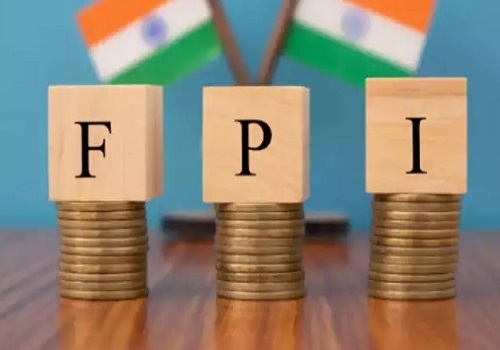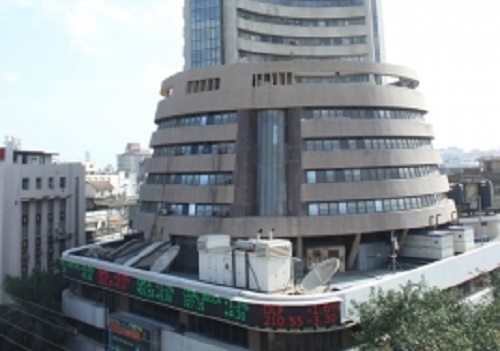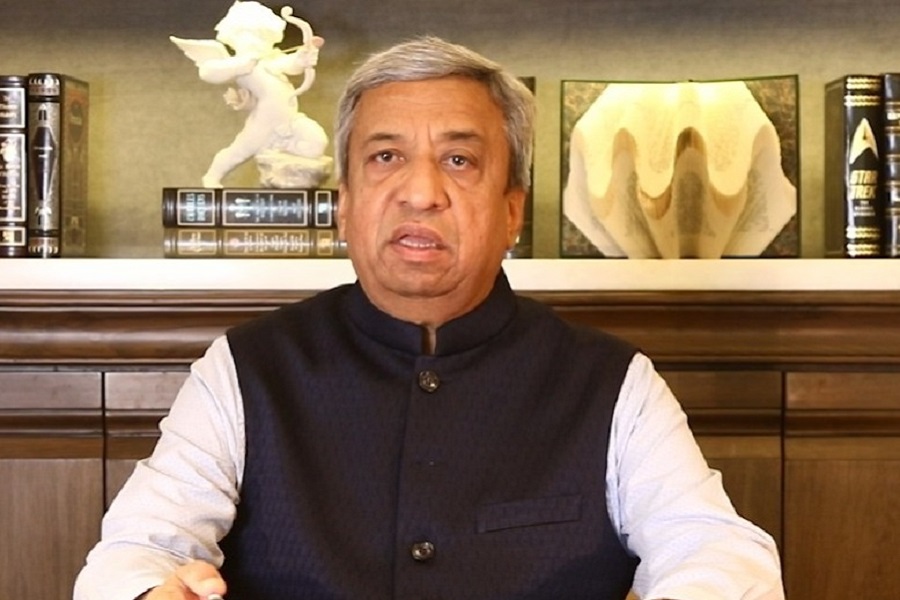Agri Commodity Technical Report 08 June 2023 - Geojit Financial Services

SPICES
• On Wednesday, Jeera futures continued rising, while coriander and turmeric futures too a breather from the recent fall and inched up on NCDEX. Lower level buying lifted coriander futures though gains were limited on higher supplies, while delay in the onset of monsoons and improved demand lifted turmeric futures.
• According to Gujarat government's third advance estimates released, jeera production is estimated to fall 9.3% on year to 200,780 tn. Gujarat is the second-largest producer of the commodity.
• Coriander production is seen to rise 81% on year to 376,090 tn in Gujarat, according to the state government's third advance estimates.
• India's export of spices during Apr-Jan declined 13% on year to 1.1 mln tn, according to data from the Spices Board India. In terms of value, the exports rose by 1.5% to 249.7 bln rupees. Export fell for chilli, small cardamom, jeera, coriander, and ginger. However, garlic exports rose sharply by 165% on year at 47,329 tn. While exports of jeera during Apr-Jan declined 18% on year to 154,782.6 tn, turmeric exports rose 8% on year to 136,492.6 tn. India exported 36,823.4 tn of coriander, which is down 11% on year, the data showed. Exports of small cardamom declined 23% on year to 6,447.8 tn. While large cardamom exports rose 8% on year to 1,541.8 tn. Exports of chilli in Apr-Jan were down 19% on year at 378,209.3 tn, while exports of other spices including as cinnamon, saffron, asafoetida rose 18% on year to 68,657 tn, according to the data.
• Spices Board said it had rescheduled the 14th edition of World Spice Congress from February to Sep 15-17. The congress is scheduled to be held at the CIDCO Exhibition and Convention Centre in Navi Mumbai. The rescheduling is due to constraints in international travel owing to the COVID-19 situation in some of the major spice importing countries. "The venue for the event will remain the same and all existing registrations of delegates and exhibition stalls will be carried forward to the rescheduled event," the board said.

COTTON
• The Cotton Association of India has scaled down its estimate for cotton production in India in the 2022-23 (OctSep) season by 465,000 bales (1 bale = 170 kg) to 29.84 mln bales, it said in a release. The total supply of cotton between October 2022 and April 2023 is now estimated at 26.30 mln bales – arrivals of 22.41 mln bales, imports of 700,000 bales, and an opening stock of 3.19 mln bales at the beginning of the season. For Oct-Apr, cotton consumption has been estimated at 17.9 mln bales, while export shipments till Apr 30 are estimated at 1.2 mln bales. According to the association, stocks at the end of April are estimated at 7.20 mln bales – 5.20 mln bales with textile mills and 2.0 mln bales with Cotton Corp of India, Maharashtra Federation, and multinational corporations, traders, and ginners. This includes the cotton sold but not delivered. Total supply of cotton during the 2022-23 season has been estimated at 35 mln bales, unchanged from the association's last estimate.
• The US Department of Agriculture has projected global cotton production in 2023-24 (Aug-Jul) to fall 0.6% to 115.69 mln bales on account of lower production in China, Mexico, the European Union and Turkey. The global cotton output was 116.36 mln bales in 2022-23. Total cotton supplies are, however, seen 2.9% higher at 208.30 mln bales from 202.51 mln bales due to higher opening stocks. Cotton production in India in 2023-24 is seen higher by 1 mln bales at 25.5 mln bales, while in Brazil production is seen higher by 250,000 bales at 13.25 mln bales. Cotton production in Pakistan is seen higher by 1.4 mln bales at 5.30 mln bales. The agency has projected global cotton consumption in 2023-24 to rise 6.0% to 116.23 mln bales from 109.63 mln bales. Consumption in India is estimated to be higher by 1.5 mln bales at 24.50 mln bales, while in Pakistan it is projected to rise 1 mln bales to 9.6 mln bales from 8.6 mln bales. The USDA has projected cotton exports from India to rise by 1 mln bales to 2.4 mln bales in 2023-24. Global cotton exports are seen higher with world trade rebounding and the shipping pace strengthening, the report said. Cotton ending stocks in India is seen at 10.55 mln bales in 2023-24 from 10.45 mln bales, the report said.

OTHERS
• According to the third advance estimate released by the farm ministry, pulses output is seen at 27.5 mln tn in the ongoing crop year, as against 27.3 mln tn in the previous year. Chana output for 2022-23 is pegged at 13.5 mln tn largely unchanged from 2021-22. Tur output is seen at 3.4 mln tn compared with 4.2 mln tn in the final estimate of last year.
• The National Agricultural Cooperative Marketing Federation of India has purchased 2.04million ton of chana under the price support scheme in its ongoing rabi procurement operations, the agency said in a tweet. The agency said 903,664 farmers benefitted from the procurement and a sum of 109.06 bln rupees was paid to them. The government has set the minimum support price for chana at 5,335 rupees per 100 kg for the 2023-24 rabi marketing season. In this round of procurement, the agency purchased chana in Telangana, Gujarat, Andhra Pradesh, Karnataka, Maharashtra, Madhya Pradesh, Uttar Pradesh, and Rajasthan, it said. Madhya Pradesh recorded the highest procurement at 727,749.3 tn followed by Maharashtra and Gujarat at 677,350.3 ton and 318,376.6 ton respectively.
• Agriculture and Agri-Food Canada has scaled down its estimate for chickpea prices in Canada for 2022-23 (Aug-Jul) to $1,035 per tn from $1,165 per tn projected in February. It has also lowered its estimates for mustard seed prices to $2,365 per tn from $2,525 per tn projected last month. In its March report, the farm agency said the average price of mustard seed is forecast to fall, but remain historically high due to expectations of increased carry-out stocks in Canada. The estimate for overall supply of chickpeas in Canada is unchanged from last month at 328,000 tn. The agency has also kept exports of chickpea steady at 200,000 tn. Similarly, estimates for overall supply and exports of mustard seed are unchanged at 177,000 tn and 115,000 tn, respectively. The agency left its price estimates for lentils, dry beans and dry peas unchanged from last month at $800 per tn, $1,165 per tn and $460 per tn, respectively. Canada is one of the biggest exporters of lentils to India. Agriculture and Agri-Food Canada is responsible for policies governing production, processing and marketing of farm, food and agribased products in Canada.
• According to 2nd Advance Estimates released by farm ministry, pulses output is seen at 27.8 mln tn in the ongoing crop year, as against 27.3 mln tn in the previous year. Chana output for 2022-23 is pegged at 13.6 mln tn compared with 13.5 mln tn in 2021-22. Tur output is seen at 3.7 mln tn compared to 4.2 mln tn in the final estimate of last year.
• India’s guar split exports went down in the month of Mar ’2023 by 32% to 3,010 tonnes compared to 4,420 tonnes in Feb ‘23 at an average FoB of US $1,646 per tonne in the month of Mar ’23 compared to US $1,843 per tonne previous month. The guar split shipments went down by 25% in Mar ’23 compared to the same period last year. Of the total exported quantity, 2,560 tonnes bought by China, US 200 tonnes, Netherlands 180 tonnes, Switzerland 60 tonnes and Italy 10 tonnes. India’s guar gum exports increased in the month of March 2023 by 2.7% to 19,001 tonnes compared to 18,488 tonnes during February at an average FoB of US $1,554 per tonne in the month of Mar ’2023 as compared to US $1,558 per tonne previous month. Further, the gum shipments went up by 8% in Mar ’2023 as compared to the corresponding year. Out of the total exported quantity, around 3,051 tonnes bought by USA, Russia bought 2,980 tonnes, China 2,069, Germany 1,888 tonnes, Canada 1,181 tonnes, Australia 828 tonnes and Italy 816 tonnes.

OIL AND OILSEEDS
• The Department of Food and Public Distribution has asked domestic oil producers' associations to ensure that the maximum retail price of major edible oils is cut further by 8-12 rupees per ltr with immediate effect.Domestic edible oil associations informed the government they will further reduce retail prices at a meeting convened by the Department of Food and Public Distribution Secretary Sanjeev Chopra Friday.The government convened the second meeting with domestic oil producers' associations including the Solvent Extraction Association of India and the Indian Vegetable Oil Producers’ Association to discuss further reduction in retail prices of edible oil amidst the fall in global prices.It was discussed in the meeting that the international prices of imported edible oils are continuing on a downward trend and the edible oil industry needs to ensure that the prices in the domestic market also drop commensurately.The associations informed that the global prices of different edible oils have fallen by $150-$200 per tn in the last two months and there is an element of time lag for reflection in the retail markets and the maximum retail prices are soon expected to drop further.Some major brands have cut the prices of refined sunflower and refined soybean oil by 5-15 rupees per ltr after a meeting with the department earlier. Similar reduction has been done in mustard oil and other edible oils as well. The reduction in oil prices came in the wake of reduction of international prices and reduced import duty on edible oils making them cheaper. The associations were then advised to ensure that the entire benefit of the reduced international prices be passed on to consumers invariably.
• The National Agricultural Cooperative Marketing Federation of India has purchased 686,771 tn of mustard seeds under the price support scheme in its rabi procurement operations, the agency said in a tweet on Tuesday. As many as 302,674 farmers benefitted from the procurement and 37.43 bln rupees was paid to them, the agency said. The government has set the minimum support price for mustard at 5,450 rupees per 100 kg for the 2023-24 rabi marketing season, against 5,050 rupees per 100 kg last year. In this round of procurement, the National Agricultural Cooperative Marketing Federation of India purchased mustard in Haryana, Guajarat, Rajasthan, Uttar Pradesh, and Madhya Pradesh. In its third advance estimate, the government has pegged India's mustard production in the 2022-23 (Jul-Jun) crop year at 12.5 mln tn, against 12.0 mln tn the previous year.
• India's oilmeal exports surged 48.5% on year to 493,448 tn in April, data released by The Solvent Extractors' Association of India showed. The rise in exports was primarily on account of higher shipment of mustard meal and soybean meal, the association said. In April, the country exported 246,568 tn mustard meal, significantly higher than 229,208 tn in the year-ago period. Exports of castor seed meal rose to 29,477 tn from 25,758 tn a year ago, and those of soymeal rose 610.8% to 177,243 tn. "Inspite of support from export of rapeseed meal, deteriorated prices of edible oil both in international and domestic markets are discouraging farmers to sell mustard for the crushing," the association said in its release. The association has revised its estimate for mustard crop production this year to 11.2 mln tn, lower than 11.5 mln tn estimated last month due to unseasonal rain which impacted the standing crop of mustard seed. However, rice bran meal exports in April declined to 37,479 tn from 52,450 tn a year ago. During April, South Korea imported 86,230 tn oilmeal from India compared with 142,257 tn a year ago, while Vietnam imported 100,860 tn, against 62,979 tn a year ago, the association said. Last month, 117,214 tn of oilmeal was exported from the Kandla port, and 171,307 tn from Mundra port. Exports from Mumbai port, including the Jawaharlal Nehru Port Trust, were at 53,434 tn, while 24,090 tn was shipped from the Kolkata port and 127,403 tn from other ports, the association said.
• The US Department of Agriculture has projected global oilseed output in 2023-24 (May-Apr) to rise 7.0% to 671.2 mln tn from 627.4 mln tn last year. The global oilseed outlook for 2023-24 shows higher production, crushing, and ending stocks compared to the last marketing year, the department said in its May report. Global production is estimated higher primarily due to higher soybean production in South America and the US, higher sunflower seed output in the European Union, and higher rapeseed output in the European Union and Canada, it said. The agency has projected global soybean output to rise by 40.2 mln tn to 410.6 mln tn. Brazil's soybean crop is estimated at a record 163.0 mln tn, while Argentina's is seen 21.0 mln tn higher at 48.0 mln tn, according to the report. The agency has estimated soybean production in the US at 122.7 mln tn compared with 116.4 mln tn in 2022-23. Brazil is the world's top producer of soybean, followed by the US and Argentina. The agency has scaled up its estimate for global ending stocks for 2023-24 to 139.03 mln tn, up 21.1 mln tn year-on-year. "Trade is limited by higher oilseed production in major importing countries and lower production in major exporters of rapeseed," the agency said in its report. The estimate for global soyoil production for 2023-24 has also been revised upwards to 62.5 mln tn , against 58.9 mln tn recorded the previous year. The estimate for global soyoil exports in 2023-24 has been revised higher to 11.8 mln tn from 10.8 mln tn. The department projected global soymeal output for 2023-24 at 260.9 mln tn, up from 246.1 mln tn the previous year. Soymeal is a derivative of soybean, manufactured by crushing the oilseed, and is mainly used in producing poultry feed.
• India's soymeal exports in April rose 589.7% on year to 200,000 tn, the Soybean Processors Association of India said. For OctApr, soymeal exports increased to 1.4 mln tn from 503,000 tn in the previous year. The 2022-23 kharif season began in October. Soymeal is primarily used as poultry and livestock feed. Indian soymeal is non-genetically modified and considered rich in protein. In April, production of soymeal rose to 803,000 tn from 559,000 tn a year ago. The output for Oct-Apr was 5.7 mln tn, up from 3.9 mln tn in the year-ago period, SOPA said.Soybean arrivals in spot markets totalled 700,000 tn in April, up 200,000 tn from last year. During Oct-Apr, arrivals rose to 8.4 mln tn from 6.6 mln tn in the year-ago period. By the end of April, mills, traders, and farmers were left with around 6.5 mln tn of soybean stock, the association said. Soybean, a kharif oilseed, is sown during Jun-Jul and harvested in Sep-Oct.
• India's vegetable oil imports rose 15% on year to 1.05 mln tn in April, the Solvent Extractors' Association of India said. Vegetable oil imports in the first six months of the oil year beginning November were at 8.11 mln tn as against 6.71 mln tn a year ago, marking a rise of 21%. Meanwhile, edible oil imports for these six months were at 8.00 mln tn as against 6.54 mln tn a year ago. The vegetable oil basket consists of edible and non-edible oils. The edible oil import basket comprises crude and refined palm oils, crude soyoil, and sunflower oil. India imports palm oil from Indonesia and Malaysia, and soyoil from Argentina. Sunflower oil is imported from Ukraine and Russia. India is the world's largest importer of edible oils. As of May 1, about 736,000 tn of edible oil was at ports as against 416,000 tn a year ago. Around 2.6 mln tn was in the pipeline as against 1.8 mln tn in the same period last year, the Solvent Extractors' Association of India said.
• The government today exempted crude soybean oil and crude sunflower seed oil from import duty till Jun 30, according to an official notification. However, imports against the tariff rate quota will be allowed only upon debiting electronically in Indian Customs EDI Systems, the notification said. Tariff rate quota determines the volume of imports entering the country at a specified or nil duty. However, after reaching the limit for the quota, normal tariffs is applicable on the additional import of goods.The exemption of import duty could help in bringing down domestic prices. Domestic prices of soybean have been on a rise since the last few days. Currently, soybean is being sold at 5,200-5,450 rupees per 100 kg in the wholesale markets of Indore in Madhya Pradesh. Earlier, industry players had urged the government to increase the import duty on all edible oils by at least 20% to check the drop in prices of edible oils in the country.
• The National Agricultural Cooperative Marketing Federation of India has purchased 476,959 tn mustard seed under the price support scheme in its rabi procurement operations, the agency said in a tweet. As many as 230,521 farmers benefitted from this procurement and 25.99 bln rupees were paid to them, the agency said. The government has set the minimum support price for mustard at 5,450 rupees per 100 kg for the 2023-24 rabi marketing season as against 5,050 rupees per 100 kg last year. The National Agricultural Cooperative Marketing Federation of India purchased mustard in Haryana, Guajarat, Rajasthan, and Madhya Pradesh in this round of procurement, it said. In its second advance estimate, the government has pegged the country's mustard production in 2022-23 (Jul-Jun) crop year at 12.8 mln tn as against 12.0 mln tn the previous year.
• India's vegetable oil imports rose 6.1% on year to 1.17 mln tn in March, the Solvent Extractors' Association of India said. Vegetable oil imports in the first five months of the oil year beginning November were at 7.06 mln tn as against 5.80 mln tn a year ago, marking a rise of 21.8%. Meanwhile, edible oil imports for these five months were at 6.98 mln tn as against 5.64 mln tn a year ago. The vegetable oil basket consists of edible and non-edible oils. The edible oil import basket comprises crude and refined palm oils, crude soyoil, and sunflower oil. India imports palm oil from Indonesia and Malaysia, and soyoil from Argentina. Sunflower oil is imported from Ukraine and Russia. India is the world's largest importer of edible oils. As of Apr 1, about 978,000 tn of edible oil was at ports as against 565,000 tn a year ago. Around 2.5 mln tn was in the pipeline as against 1.6 mln tn in the same period last year, the Solvent Extractors' Association of India said.
To Read Complete Report & Disclaimer Click Here
For More Geojit Financial Services Ltd Disclaimer https://www.geojit.com/disclaimer
SEBI Registration Number: INH200000345
Views express by all participants are for information & academic purpose only. Kindly read disclaimer before referring below views. Click Here For Disclaimer




















